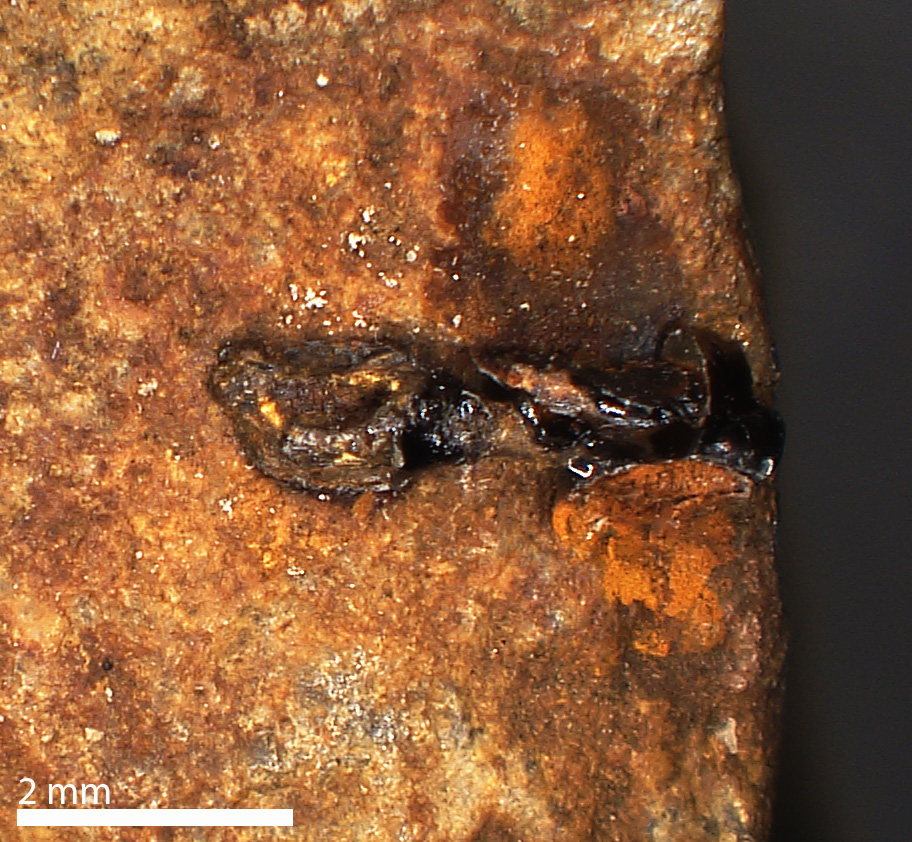A type of complex adhesive found on stone tools made by Neanderthals has provided researchers with new insights into the intelligence of this extinct human species. Made of a mix of bitumen and ocher, the multi-compound glue resembles that employed by early Homo sapiens in Africa, indicating that our ancient cousins may have had a similar level of cognition to our own ancestors.
Like early modern humans, Neanderthals are known to have used birch pitch as a type of glue for attaching stone blades to wooden hafts. However, until now, more refined mixtures containing ocher had only ever been attributed to our own species.
Yet this narrative has become unstuck thanks to a new analysis of 40,000-year-old stone tools from the iconic Le Moustier site in France, which lends its name to the Mousterian technological complex that is largely associated with the Neanderthals of the Middle Palaeolithic. Chemical analyses of colorful residues on five Neanderthal-made tools revealed traces of both goethite ocher and bitumen, a component of crude oil.

Traces of the ancient adhesive on a stone artifact.
Image credit: Staatliche Museen zu Berlin, Museum für Vor- und Frühgeschichte, photo: Ewa Dutkiewicz
“We were surprised that the ochre content was more than 50 percent,” explained study author Patrick Schmidt in a statement. “This is because air-dried bitumen can be used unaltered as an adhesive, but loses its adhesive properties when such large proportions of ochre are added.”
The researchers therefore concluded that the mixture was unsuitable for hafting, but may have served a different function. For instance, among African Homo sapiens, adhesives containing ocher were sometimes used as a grip for stone tools, cutting out the need for a handle and acting as a direct point of contact between the utensil and the user’s hand.
To investigate how this particular mixture may have been utilized by the Neanderthals of Le Moustier, the study authors conducted their own experiments using stone tools and different formulations of ancient adhesives. When using grips made of pure bitumen, they found that the substance left “sticky stains on the hand, which are difficult to remove.”
However, mixtures that contained 55 percent goethite ocher “feel more solid and are not sticky to the touch.”
“When handling such a grip, no bitumen sticks to the manipulator’s hands,” write the researchers. “Thus, mixing high ochre loads in fresh bitumen presents an advantage for such composite tools.”

Pure bitumen is too sticky, but the addition of ocher makes a great grip.
Image credit: Schmidt et al., Sci. Adv. 10, eadl0822 (2024)
Based on these findings, the study authors conclude that Neanderthals used the mixture as it was sticky enough to enhance their grip on a stone tool, but not so sticky that it adhered to their hands. As such, it was the perfect material for using as a grip.
“These astonishingly well-preserved tools showcase a technical solution broadly similar to examples of tools made by early modern humans in Africa, but the exact recipe reflects a Neanderthal ‘spin,’ which is the production of grips for handheld tools,” said study author Radu Iovita.
Such innovation becomes even more impressive when one considers that the nearest source of bitumen to Le Moustier was an oilfield some 200 kilometers (124 miles) to the south, while ocher would have been collected from a goethite outcrop about 50 kilometers (31 miles) north of the ancient site.
According to the study authors, putting these two ingredients together for a specific purpose “implied cognitive processes, such as forward-planning and imagination.”
“Compound adhesives are considered to be among the first expressions of the modern cognitive processes that are still active today,” said Schmidt. “What our study shows is that early Homo sapiens in Africa and Neanderthals in Europe had similar thought patterns.”
The study is published in the journal Science Advances.
Source Link: 40,000-Year-Old Multi-Compound Glue Suggests Neanderthals Were Smarter Than We Thought